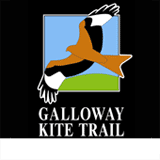| |
5. Legal status & Threats  Click for more images Click for more images  Click for more images Click for more images  Click for more images Click for more images | | Legal status & Threats
Red Kites and the Law
The red kite is afforded the highest degree of legal protection under the Schedule 1 of the Wildlife and Countryside Act 1981. It is an offence to take, injure or kill a red kite or to take, damage or destroy its nest, eggs or young. It is also an offence to intentionally or recklessly disturb the birds close to their nest during the breeding season. Violation of the law can attract fines up to £5,000 per offence and/or a prison sentence of up to 6 months. The Nature Conservation (Scotland) Act 2004 widens this protection and provides additional protection for the red kite in Scotland.
All red kites in captivity must be registered. Wild red kites are allowed to be kept in captivity only temporarily if they are injured, and then must be released back to the wild at the earliest opportunity. Captive bred individuals can be legally kept, but these must be ringed and registered. Sale or public display of red kites are controlled by Article 10 licence. All the licensing matters are dealt with by Department of Environment, Food and Rural Affairs in Britain and by Department for Agriculture in Northern Ireland.
Current Threats & Conservation Status
As scavengers, red kites are particularly sensitive to illegal poisoning. Illegal poison baits set for foxes or crows are indiscriminate and kill protected birds and other animals. It is estimated that at least half of our native Welsh kites die through this deliberate abuse of agricultural chemicals. In Scotland, the survival of juvenile birds is especially low due to poisoning, and this is limiting the growth of the kite population there. Over 60% of red kites released in Scotland have been poisoned, shot or trapped. Poisoning is also the most frequent cause of death of kites in England. Red kites are especially vulnerable to the modern (second generation) rodenticides used to control rats, since they are skilled in finding the corpses of poisoned rats.
In UK, the red kite is listed in the Amber List of birds of medium conservation concern due to its stage of recovery from an extreme historic decline in numbers. Although the British kites are doing well, the populations in the species’ strongholds in Germany, France and Spain are in serious decline.
(Source: RSPB Red Kite Information leaflet (revised 2007)
| | |
| |
 Click for more images
Click for more images 









